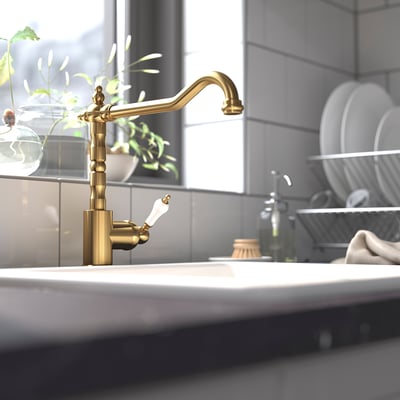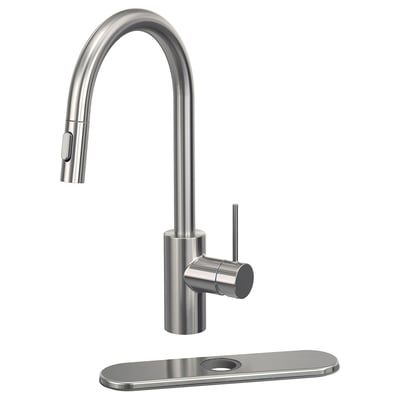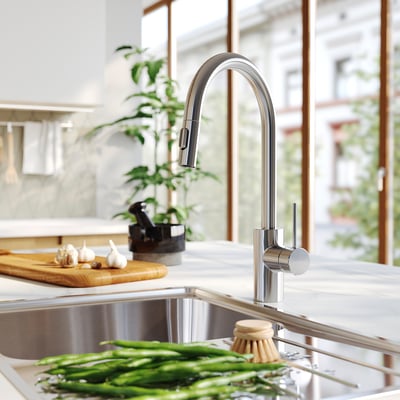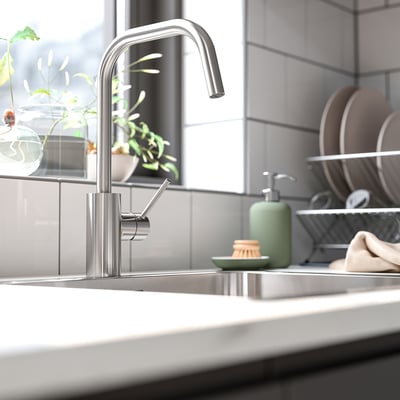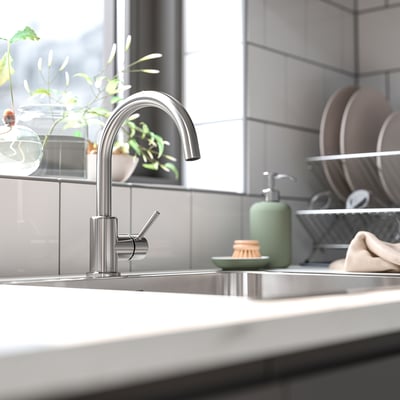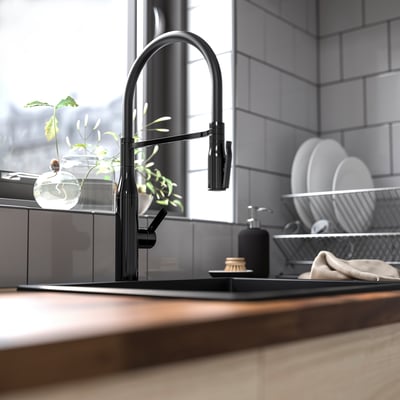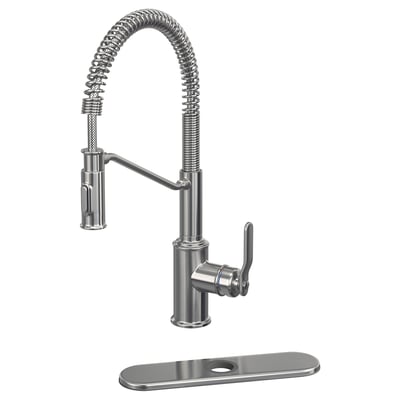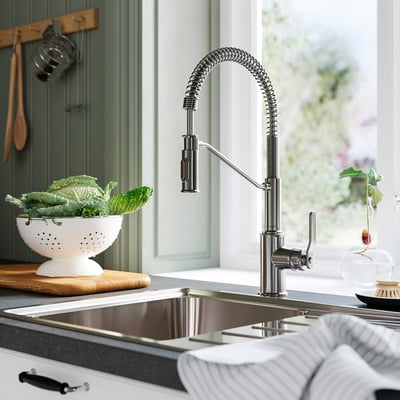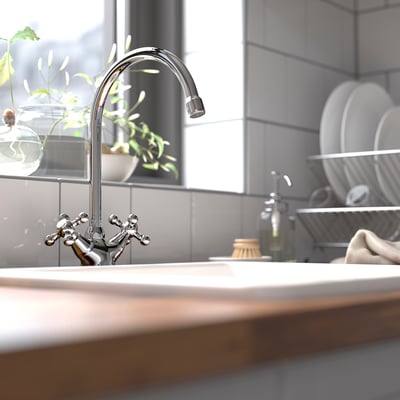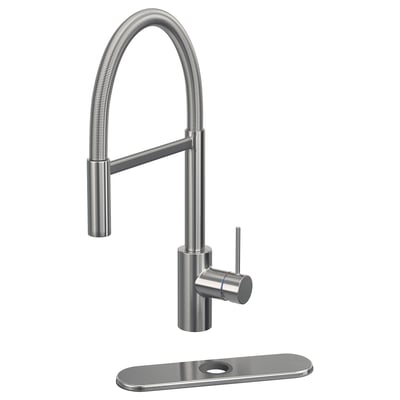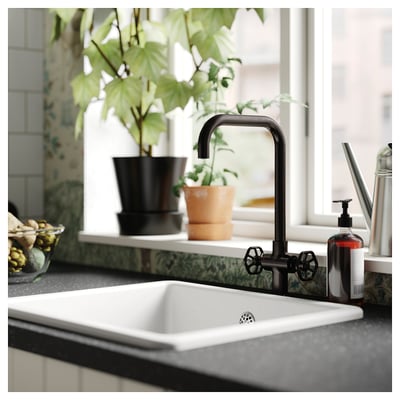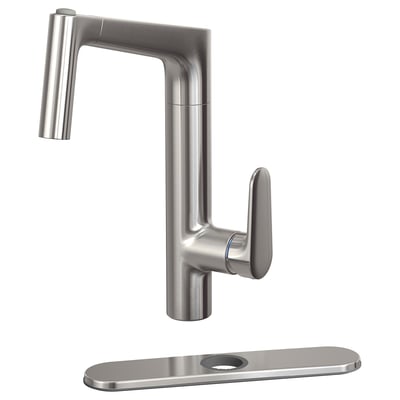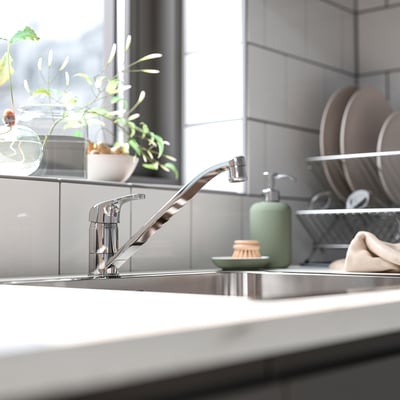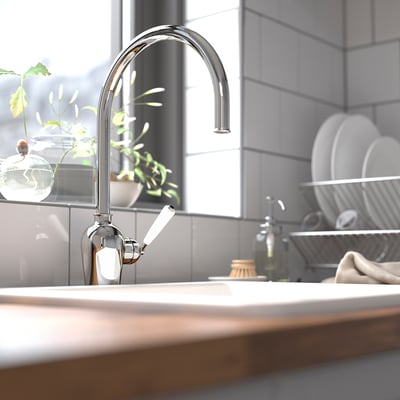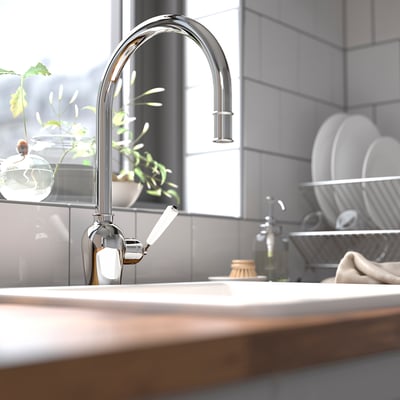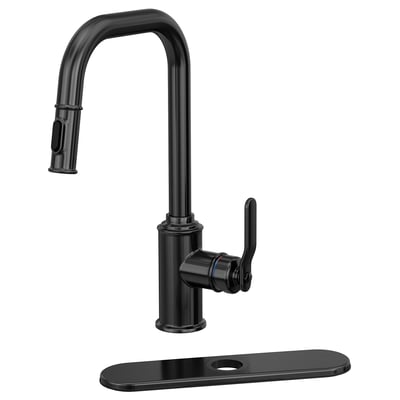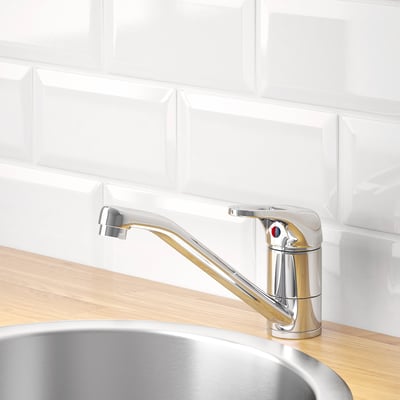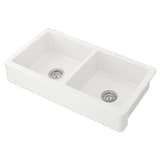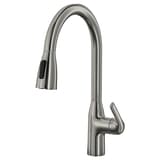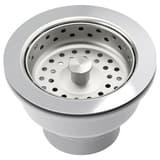Kitchen faucets
To help you match your kitchen look, our kitchen faucets come in a wide range of styles including black, stainless steel, chrome plated and brass color options. But there's more to them than that. They save you money, too. Each of our kitchen sink faucets has a little device that mixes in air with the flow so you use less water – good for your wallet, and the planet.
Sort and Filter
Recently viewed
Related categories
Kitchen faucet types and functions
Our range of faucets add style to your kitchen without having to sacrifice function. Find a variety of spout types as well as touchless kitchen faucets. We explain the faucet types below, to help you in your purchasing decision.
Kitchen faucets with low vs. high spouts
Kitchen faucets with low spouts always have the handle on top, and are ideal for small single bowl sinks. The high spout makes it easier to wash dishes, including large pots.
Double vs. single lever kitchen faucets
Another consideration to make is whether you prefer a double or single lever kitchen faucet.
- Single lever kitchen faucets are sleek and space-saving, with one lever or handle controlling water flow and temperature. This popular faucet type provides ease-of-use for a wide range of people, including those with limited mobility in one arm or hand.
- Double lever kitchen faucets provide a more classic look, with two separate handles to control hot and cold water and its flow. Double lever faucets typically require more space than single lever faucets. A key advantage they offer is more precise temperature control, which can be important in homes with small children who are learning to brush their teeth, wash their hands or help with food preparation.
Pull down kitchen faucets with sprayer
Rinsing dishes is easier with the pull-out spout. A counterweight makes the hose easily retract back into the kitchen faucet.
Touchless kitchen faucets with sensor technology
Turn this faucet on and off with a slight hand movement, without touching it. The sensor is placed on the side, so it's less visible and more practical.
Water-saving aerators
Earth may be covered in a lot of water, but very little of it is drinkable and even less is accessible. No organism can survive without it, and no new water is created. It’s constantly recycled, but our freshwater supply is overused; not evenly distributed; and impacted by pollution, contamination and climate change. That’s why we equip all our kitchen faucets with a water-saving aerator that reduces water use up to 40% — while maintaining the same pressure. We didn’t invent aerators, but think they are an important example of how we can work together to save water for everyone’s benefit.







